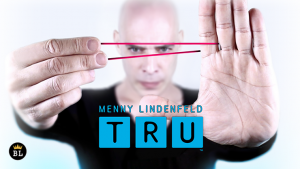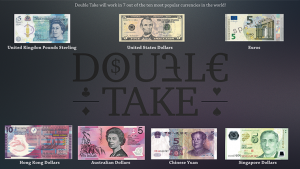Michael Breggar – Dancing With The Cards (official pdf)
$3.95
Description
Award-winning columnist Michael Breggar is back with his signature quirky, yet amazing and professional almost-self-working effects. This time, it’s all cards. As always, it’s not just the tricks you learn, but the subtleties, tips and nuances to make your magic easy, astonishing and engaging!
Jon Racherbaumer Michael provides recognizable forms for the simplicity and cleverness of the methods to secretly nourish the engaging and amusing themes he has chosen to anecdotally share—not as tricks per se but as congenial curiosities…which is a difference that truly makes a difference!
Liam Montier Michael Breggar’s continuing contribution to magic is a revelation – commercial plots, devious methods and, most valuable, quirky and engaging presentations! Dancing With the Cards is a must read for card lovers everywhere!
Scott Wells Michael has given us a real gift with “Dancing With The Cards” in so many ways. First of all, the tricks themselves are non-heavy, sleightly speaking, and easily within the grasp of the beginner. But the presentations (as always) are what separates the magus from the archimage and the pedestrian from the prestidigitator. Michael gives us entertaining, multi-faceted presentations that will endear and enchant any audience. Moreover, his writing style keeps you entertained as you learn. But the subtleties thrown in the mix should not be overlooked as they are what professionals are made of (if you don’t mind me ending a sentence with a preposition). A delightful book of (mostly) card tricks and I guarantee you will find something to put into your performing repertoire, even if it is a suggested move or subtlety. Highly recommended.
The footsteps within…
The Third Attribute. A thought-of card effect that seems like real mind-reading. Did I mention you need not touch the cards?
That Flippin’ Contest. A nice follow-up to The Third Attribute effect. A version of the classic “Sloppy Triumph” effect adds an element of relaxed comedy.
The Pasteboard Tango. A shuffled deck is cut in half and the helper keeps either half. He randomly sets aside 5 or 6 cards in time to the playing music. You do the same. The random cards match!
52! This number represents the number of ways a full deck of 52 cards can be organized (more ways than the number of stars in the known universe). The spectator then makes several decisions based upon cards selected which ultimately leads her to a final selection. Despite the enormity of the odds, you have predicted this selection.
The (Un)Usual Suspects. “Card calling” routines are numerous and while the method described here is as old as the hills, this effect, where you name the cards selected by five volunteers, is as fresh as tomorrows’ news.
Occupation Hazard. A bit of black comedy in this routine that uses not playing cards, but cards on which you’ve written names of occupations that nobody ever wants. The routine is framed as an employment aptitude test and your assistant somehow manages to select the job that doesn’t involve anything grisly!!
Face Your Fears. Steinmeyer meets Freud. Your spectator looks through 25 cards which list common phobias. They find the thing that frightens them the most. After a complete shuffle of fears, they spell out the name of two phobias (which may or may not be theirs) — but in the end, they wind up with the one card that correctly names their phobia. All the phobias are different and spell with different numbers of letters. Psychologically astounding (and assuredly upsetting!!)
The Wry Detector. This is my take on the classic “lie detector” routine. A card is selected and your volunteer can choose to lie or tell the truth about the three attributes of the selection. You have a little gadget though that not only helps you correctly identify the “real” selection but causes the “lied-about” card to turn over in an unused deck!
Unmarked Cards. One of my favorite openers. A spectator draws any card thought of on a blank card. Suddenly the blank deck from which the card was originally taken becomes fully printed and the spectator’s hand-drawn card lays between card with the same suit and same value.
My Favorite Things. You show a selection of coins and your helper examines then selects any one. Similarly, she selects a playing card and signs it face. Why is the coin your “favorite”? When turned over, it now bears a mini version of the selected card .. along with the spectator’s signature!
My Birthday Card. A self-working take on the classic “diary effect” made much more personal. And funny!
Plus, a section on some great subtleties and “pro-tips,” and several of my favorite non-move moves!









